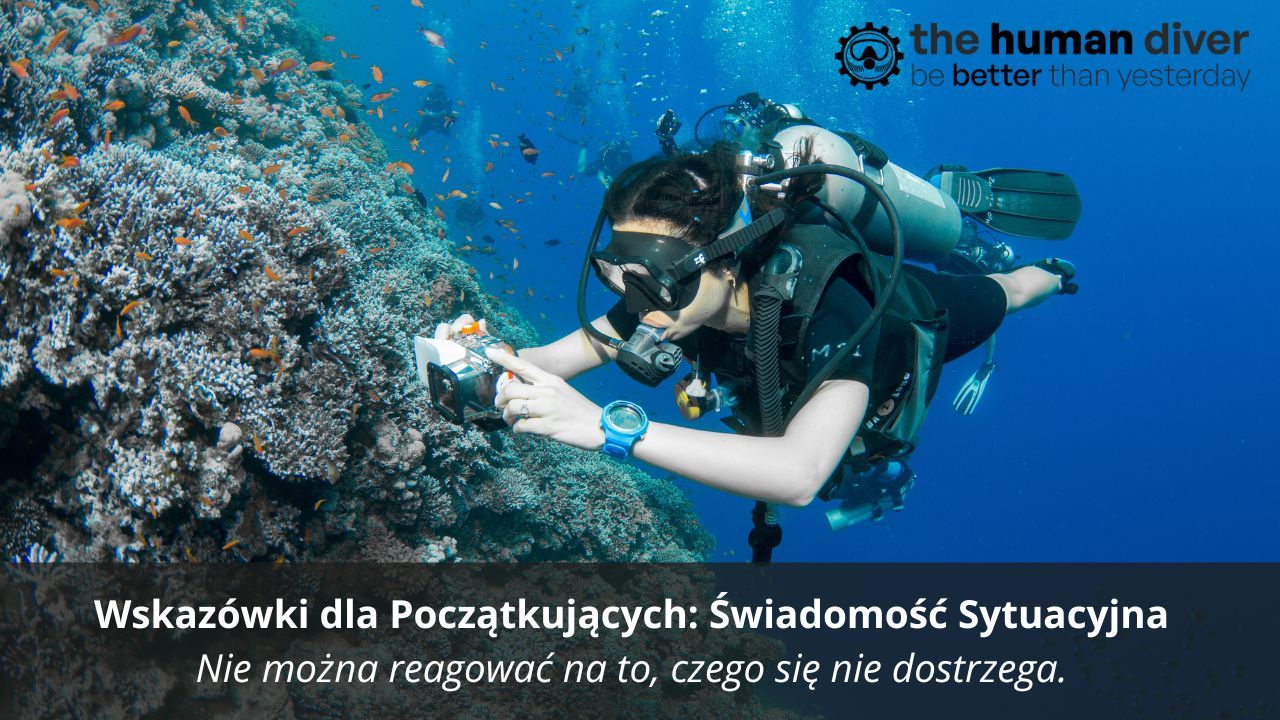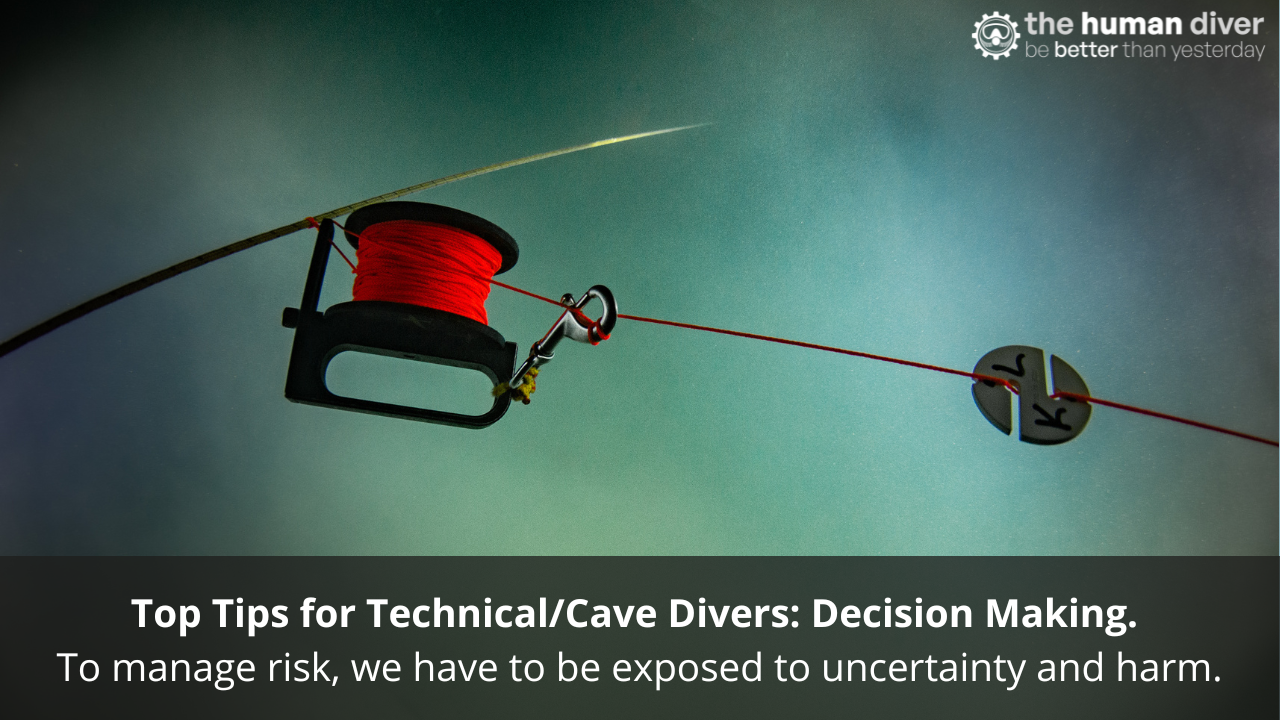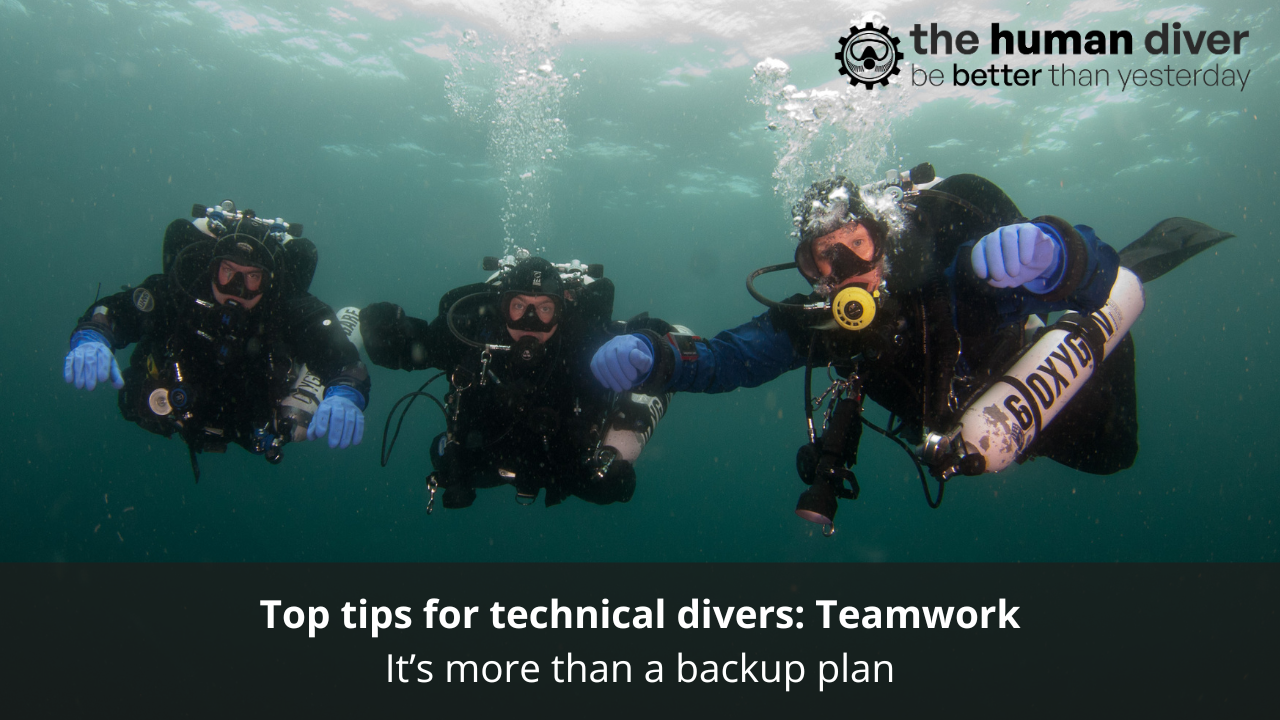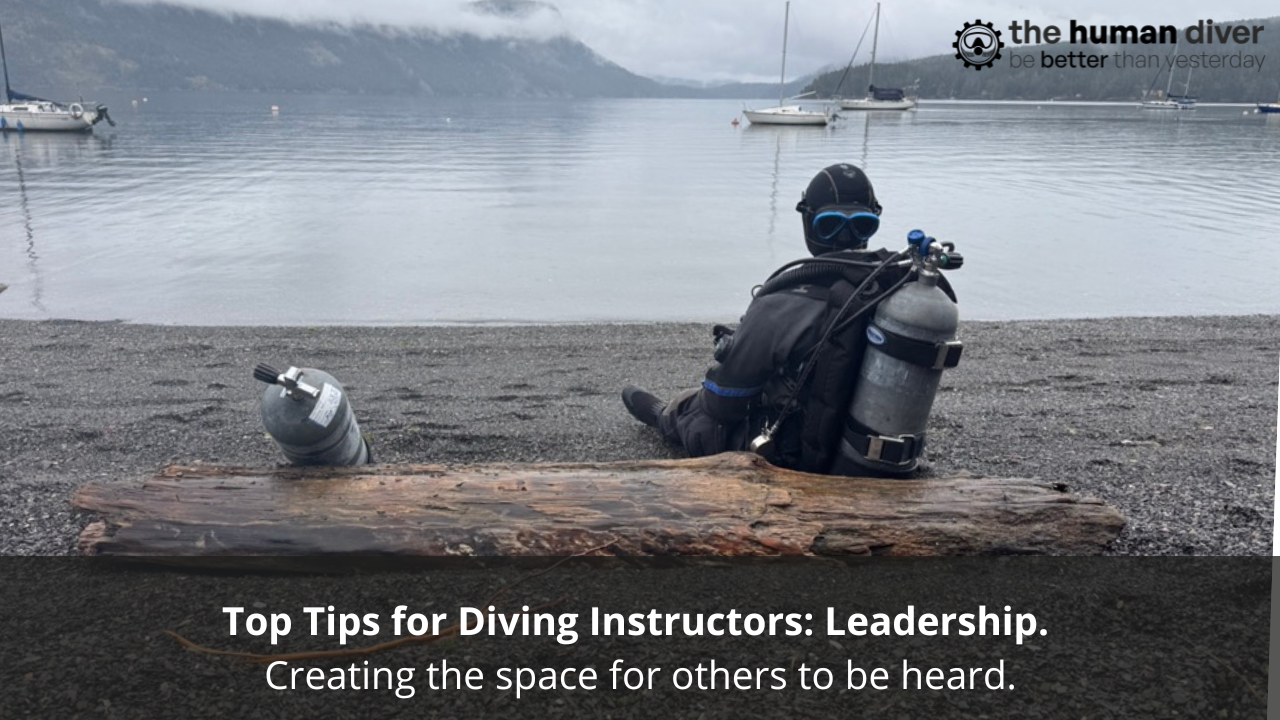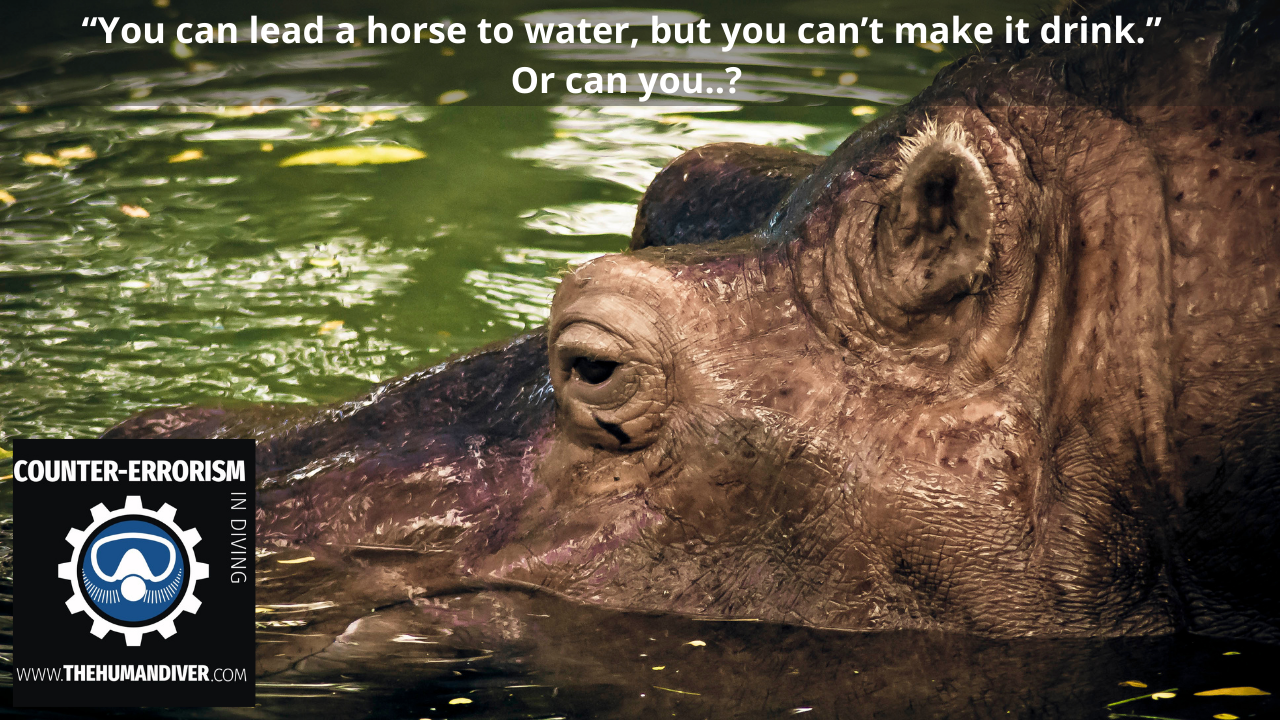
“You can lead a horse to water, but you can’t make it drink.” Or can you..?
Jan 03, 2021I recently ran the 2-day Human Factors in Diving Level 2 programme in Veenendaal, the Netherlands. I had a last-minute cancellation and I thought it would be nice to offer this spot to a young scuba diving instructor and technical diver.
This diver, let’s call him Jack, had signed up for a rebreather crossover course with me and I thought he would benefit from the insights and experiences of the Level 2 programme. The crossover course was due to start in a couple of weeks. He had done 11 dives on a different rebreather (including the course dives) in the last 12 months and Jack wanted to learn to dive a different rebreather.
The rebreather he had learned to dive on was from the dive centre he was teaching through in Asia. But then Covid-19 changed everything and he had to move back to Europe and back in with his parents. This new rebreather was bought by a family member. He would have unrestricted access to this unit, so why not?
Jack thought about my offer to join the programme and decided not to join. He had been working hard all week and needed the weekend to recuperate. The programme ran as scheduled with five very enthusiastic participants and all was well.
Until this morning.
This morning I saw a post on one of Jack’s social media accounts. It was a picture of Jack, with this new rebreather. The picture was taken by a fellow diver, while underwater. Jack had gone for a dive with a rebreather he wasn’t certified on. And he was promoting it proudly. My first thought was: “Seriously?” My second thought was: “Instructors are leaders. What sort of example are you setting Jack? Seriously!”
Jack already had several “likes” and even a few comments on his post. People were writing how cool he looked and how great it was.
Then Jack contacted me via a Private Message. The conversation started off strange. He saw nothing wrong with what he had done. It was only a short dive of about 10 minutes to get the hose routing streamlined and to do a proper buoyancy check. Nothing went wrong.
I explained to him what I thought was wrong with the post and especially his actions and his attitude and reasoning.
I think several things were at play here.
First of there was the overconfidence. Jack has a very limited amount of time on rebreathers, so not a lot of experience and mental models to fall back on. Gary Klein has done extensive research in this area and I recommend reading his book “Source of Power: How people make decisions”. Klein developed a concept called Naturalistic Decision Making. The idea is that we don’t make decisions in a logical and systematic way, weighing all the options. We make decisions based on cues and patterns we observe and we compare these with previous experiences. We then choose the closest “fit” and the actions associated with that “fit”. The danger lies in the missed cues.
 Klein's Naturalistic Decision-Making Model
Klein's Naturalistic Decision-Making Model
Because Jack doesn’t have a lot of experience he might miss cues (things that don’t seem meaningful to him) and then based on his limited experience and knowledge make the wrong decision. His mind fills in the blanks and he may end up in a lot of trouble. Or not and here is where the second problem comes in.
Outcome bias and hindsight bias are very powerful and they heavily impact our future decision making. Gareth Lock describes this in his book “Under Pressure” and this bias is also linked to something called normalisation of deviance. Because nothing went wrong, then it must have been okay. For the next time, or another diver seeing this post, the boundaries or limits have moved, providing a new baseline.

Jack used to be with a dive centre in his home country that had a reputation for cutting corners. There were actually several diving accidents and a couple of fatalities, but they kept operating as if nothing had happened. This was the culture in which he learned to dive and later on became a diving instructor. The fact that the training agency failed to follow up on the quality management issues didn’t help either. This perception of “the rules are for other people and we can set our own” might have, subconsciously, influenced his decision to do this dive.
I pointed out that my training agency demanded I evaluate my student’s attitude too and that nothing he had said had convinced me that he saw anything wrong with what he had done or with the example he was setting. In my opinion, he did not have the right attitude to enrol in my course.
Jack told me it wasn’t about the certification card. That’s not why he wanted to do the course. Also, no one who saw the photo would know that he wasn’t certified yet. Again, he was trying to justify his actions. He also said that the same photo could have been taken a couple of weeks from now while he was in the water doing the course with me. This sort of reasoning tells a story that didn’t happen. Sydney Dekker explains this in great detail in the book “The Field Guide to Understanding ‘Human Error’ “. This way of thinking is not helpful because it doesn’t do justice to what actually happened. Jack went for a dive on a rebreather he wasn’t certified on and without prior instruction or an instructor present.

I told him to look up Wes Skiles on the internet. Wes was an accomplished underwater photographer and filmmaker and he was recognized as “Diver of The Year” by Beneath the Sea in 1996. Unfortunately, Wes died diving a rebreather he wasn’t certified on.
Again I explained to Jack that if we want to improve dive safety, then we have to lead by example. He may only have 504 followers on his social media account at the moment, but had an accident happened news of it would have certainly reached many more people. It would have damaged his reputation, the reputation of the rebreather manufacturer and that of (technical) diving in general. This may not have mattered to him if he had died, but I’m sure his parents wouldn’t have been too happy losing their son in such a way and for such a reason.
The things we do, have consequences.

And then, things clicked. Jack said he hadn’t realised how his post could come across. The message he wanted to put out there had been that he was keen to start his training and that he had wanted to be prepared as well as possible.
I asked him what his family member had said when he had announced he was going to do this “check dive”? The answer: “Bart’s not going to let you get away with this.” But, the family member didn’t stop him either.
It is not about policing the diving community. This is not why I try to make people more aware of the aspect of human factors in diving. It is to increase diving safety. Make sure more people can enjoy our wonderful sport and live to tell about it. What better way to grow the sport and to come together as a community than by sharing stories?
If it means getting a reputation for being a stickler for safety, procedures and human factors, well… so be it.
To all you dive leaders out there, ask yourself: what image am I trying to communicate? Will my “audience” get the message I’m trying to get across? How do I verify understanding? Let’s close the loop.
Or, as Michael Conrad the actor playing the role of Sgt. Phil Esterhaus in the hit series Hill Street Blues used to say after each rollcall: “Let’s be careful out there.”

Bart Den Ouden
Bart, who has been a professional diver for almost 20 years, strongly believes that training is paid for but certification is earned. He has always felt “something” was missing in most of the training programmes he has undertaken or taught. Human Factors has filled that gap for him.
He became a professional diver in 2001 and five years later, an EFR Instructor Trainer, a TDI Instructor Trainer a year after that and a PADI Course Director in 2008. He also offers Workplace Accredited Training and is a Diver Medical Technician. He is an Open and Closed Circuit Advanced Trimix Instructor Trainer with around 3,000 dives over 20 years of diving.
Bart was an early adopter and supporter of the Human Factors in Diving courses and went on to offer himself as an instructor with The Human Diver. He wanted to be at the forefront of this of holistic teaching in diving.
Want to learn more about this article or have questions? Contact us.





